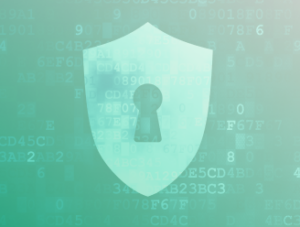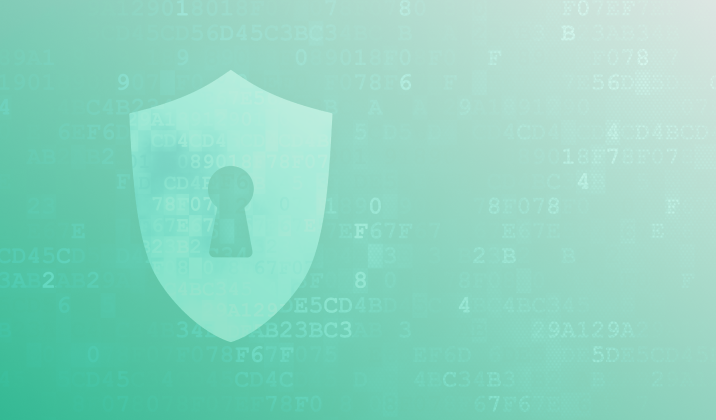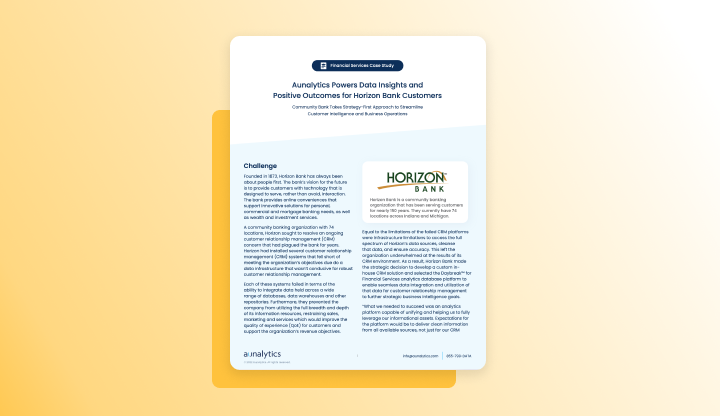How Cybersecurity Mitigation Efforts Affect Insurance Premiums, and How to Keep Your Business Secure

If you have received a renewal notice with a shocking sticker price for 2022, it is time to review your internal controls and security to learn if you can put in place further data protection to lower your rate. Worse, if you have received a notice that your business insurance policies are now excluding cyber coverage, data theft, or privacy breaches, you may be forced to shop for new cyber coverage at a time when attacks are at an all-time high. Without adequate security controls, obtaining coverage may be impossible. Due to the high cost of data breach incidents, you need to make sure that you are eligible for cyber coverage, but what does it take for 2022?
Aunalytics compliance and security experts are ready to help. We provide Advanced Security and Advanced Compliance managed services including auditing your practices, and helping you to mature your business cybersecurity processes, technology and safeguards to meet the latest standards and prevent new cyberattack threats as they emerge. Security maturity is a journey, and best practices have changed dramatically over the years. Threats evolve over time and so too must your cyber protection for your business to remain compliant and operational.
Does Your Cybersecurity Meet 2022 Insurance Renewal Standards?
Does Your Cybersecurity Meet 2022 Insurance Renewal Standards?
Given the increasing volume of cyberattacks over the past year, underwriters are tightening eligibility requirements for cybersecurity coverage. Learn how to put in place the necessary security controls to safeguard your business and secure insurance coverage.

Fill out the form below to receive the article.
Aunalytics is a data platform company. We deliver insights as a service to answer your most important IT and business questions.
Featured Content
Think your financial institution is immune to ransomware? Think again.
Many organizations in the financial services sector don’t expect to be hit by ransomware. In the recent State of Ransomware in Financial Services 2021 survey by Sophos, 119 financial services respondents indicated that their organizations were not hit by any ransomware attacks in the past year, and they do not expect to be hit by them in the future either.
The respondents mentioned that their confidence relied on the following beliefs:
- They are not targets for ransomware
- They possess cybersecurity insurance against ransomware
- They have air-gapped backups to restore any lost data
- They work with specialist cybersecurity companies which run full Security Operations Centers (SOC)
- They have anti-ransomware technology in place
- They have trained IT security staff who can hinder ransomware attacks
It’s not all good news. Some results are cause for concern. Many financial services respondents that don’t expect to be hit (61%) are putting their faith in approaches that don’t offer any protection from ransomware.
- 41% cited cybersecurity insurance against ransomware. Insurance helps cover the cost of dealing with an attack, but doesn’t stop the attack itself.
- 42% cited air-gapped backups. While backups are valuable tools for restoring data post attack, they don’t stop you getting hit.
While many organizations believe they have the correct safeguards in place to mitigate ransomware attacks, 11% believe that they are not a target of ransomware at all. Sadly, this is not true. No organization is safe. So, what are financial institutions to do?
While advanced and automated technologies are essential elements of an effective anti-ransomware defense, stopping hands-on attackers also requires human monitoring and intervention by skilled professionals. Whether in-house staff or outsourced pros, human experts are uniquely able to identify some of the tell-tale signs that ransomware attackers have you in their sights. It is strongly recommended that all organizations build up their human expertise in the face of the ongoing ransomware threat.
Meeting the Challenges of Digital Transformation and Data Governance

To meet these challenges, companies will be tempted to turn to traditional Data Quality (DQ) and Master Data Management (MDM) solutions for help. However, it is now clear that traditional solutions have not made good on the promise of helping organizations achieve their data quality goals. In 2017, the Harvard Business Review reported that only 3 percent of companies’ data currently meets basic data quality standards even though traditional solutions have been on the market for well over a decade.1
The failure of traditional solutions to help organizations meet these challenges is due to at least two factors. First, traditional solutions typically require exorbitant quantities of time, money, and human resources to implement. Traditional installations can take months or years, and often require prolonged interaction with the IT department. Extensive infrastructure changes need to be made and substantial amounts of custom code need to be written just to get the system up and running. As a result, only a small subset of the company’s systems may be selected for participation in the data quality efforts, making it nearly impossible to demonstrate progress against data quality goals.
Second, traditional solutions struggle to interact with big data, which is an exponentially growing source of low-quality data within modern organizations. This is because traditional systems typically require source data to be organized into relational schemas and to be formatted under traditional data types, whereas most big data is either semi-structured or unstructured in format. Furthermore, these solutions can only connect to data at rest, which ensures that they cannot interact with data streaming directly out of IoT devices, edge services or click logs.
Yet, demand for data quality grows. Gartner predicts that by 2023, intercloud and hybrid environments will realign from primarily managing data stores to integration.
Therefore, a new generation of cloud-native Data Accuracy solutions is needed to meet the challenges of digital transformation and modern data governance. These solutions must be capable of ingesting massive quantities of real-time, semi-structured or unstructured data, and be capable of processing that data both in-place and in-motion.2 These solutions must also be easy for companies to install, configure and use, so that ROI can be demonstrated quickly. As such, the Data Accuracy market will be won by vendors who can empower business users with point- and-click installations, best-in-class usability and exceptional scalability, while also enabling companies to capitalize on emerging trends in big data, IoT and machine learning.
1. Tadhg Nagle, Thomas C. Redman, David Sammon (2017). Only 3% of Companies’ Data Meets Basic Data Quality Standards. Retrieved from https://hbr.org/2017/09/only-3-of-companiesdata-meets-basic-quality-standards
2. Michael Ger, Richard Dobson (2018). Digital Transformation and the New Data Quality Imperative. Retrieved from https://2xbbhjxc6wk3v21p62t8n4d4-wpengine.netdna-ssl.com/wpcontent/uploads/2018/08/Digital-Transformation.pdf
Aunalytics Announces FedRAMP Ready Status of Its Cloud
Cloud Hosting Services Are Tested and Confirmed to Meet the Trust Principles of Confidentiality, Availability, Security, and Privacy for Federal Government Agencies
South Bend, IN (June 29, 2021) - Aunalytics, a leading data platform company delivering Insights-as-a-Service for enterprise businesses, announced today that its Aunalytics Cloud solution has achieved Federal Risk and Authorization Management Program (FedRAMP) Ready status and is actively working toward FedRAMP certification. Certified cloud-based products help U.S. federal agencies meet increasingly complex regulations and defend against cybersecurity threats, prevent data loss, enforce compliance, and protect agency domains.
FedRAMP is a government-wide program which is an assessment and authorization process that federal government agencies have been directed to use to ensure security is in place when accessing cloud computing products and services. By applying the FedRAMP framework to their evaluation, government agencies have a uniform assessment and authorization of cloud information security controls, alleviated cloud security concerns, and increased trust in the validity of assessments.
“FedRAMP Ready status and, ultimately certification, represents one of the highest compliance standards and third party validations of our cloud hosting services, giving federal agencies the utmost confidence that our offering is tested and confirmed to meet the trust principles of confidentiality, availability, security, and privacy,” said Kerry Vickers, CISO Aunalytics. “Meeting these rigorous standards will benefit all of our clients in every industry and enable us to expand our footprint within the government sector by providing federal agencies, as well as defense contractors and others required to use FedRAMP certified suppliers, with a cloud infrastructure that is FedRAMP compliant.”
Listed as FedRAMP Ready on the FedRAMP Marketplace, Aunalytics is seeking an agency sponsor as it moves toward the second phase of being FedRAMP authorized.
Tweet this: .@Aunalytics Announces #FedRAMP Ready Status of Its Cloud #Dataplatform #Dataanalytics #Dataintegration #Dataaccuracy #ArtificialIntelligence #AI #Masterdatamanagement #MDM #DataScientist #MachineLearning #ML #DigitalTransformation #FinancialServices
About Aunalytics
Aunalytics is a data platform company delivering answers for your business. Aunalytics provides Insights-as-a-Service to answer enterprise and mid-sized companies’ most important IT and business questions. The Aunalytics® cloud-native data platform is built for universal data access, advanced analytics and AI while unifying disparate data silos into a single golden record of accurate, actionable business information. Its DaybreakTM industry intelligent data mart combined with the power of the Aunalytics data platform provides industry-specific data models with built-in queries and AI to ensure access to timely, accurate data and answers to critical business and IT questions. Through its side-by-side digital transformation model, Aunalytics provides on-demand scalable access to technology, data science, and AI experts to seamlessly transform customers’ businesses. To learn more contact us at +1 855-799-DATA or visit Aunalytics at https://www.aunalytics.com or on Twitter and LinkedIn.
PR Contact:
Denise Nelson
The Ventana Group for Aunalytics
(925) 858-5198
dnelson@theventanagroup.com
White Paper: The 1-10-100 Rule and Privacy Compliance

The 1-10-100 Rule and Privacy Compliance
GDPR, CCPA and the newly coming CPRA require intense data management, or the cost of non-compliance can rise to $1000 per record. You need a data management system with built-in data governance to be able to comply with these regulations.
Aunalytics is a data platform company. We deliver insights as a service to answer your most important IT and business questions.
Featured Content
White Paper: Explaining the 1-10-100 Rule of Data Quality

Explaining the 1-10-100 Rule of Data Quality
The 1-10-100 Rule pertains to the cost of bad quality. Data across a company is paramount to operations, executive decision-making, strategy, execution, and providing outstanding customer service. Yet, many enterprises are plagued by having data riddled with errors and inconsistencies.













